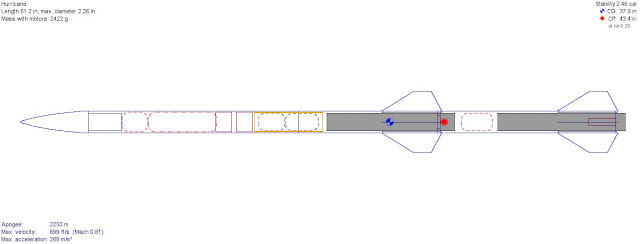 |
| Second Stage Ignition Device- Click to enlarge |
How will it work?
The main components in this design are the burnout detector, the SCR component, and the 555 timer circuit.
When the rocket takes off under the power of the 1st stage, everything is moving at the same velocity –including the steel ball. Once the 1st stage motor burns out, it causes the rocket to stop accelerating and due to air resistance the rocket begins to slow. However, the steel ball does not slow down as quickly as the rocket because there is no air resistance to affect it. So, the steel ball travels forward (up) and closes the switch. It's like holding the brake while going fast - u travel forward. In this case the air resistance is the brake on the rocket's body.
That part of the gadget was derived from Alberto/Dan Polino's Apogee detector.
The SCR now comes into play. The SCR is a semiconductor that can be configured as a switch. What makes this switch so special is that once it is turned on, the SCR will remain on even if the switch (steel ball switch) becomes open. This is crucial in triggering the timer and maintaining that voltage to the timer
The timer’s responsibility is to delay the ignition by (X) amount of seconds. This is needed to take advantage of a coasting period to attain maximal altitude before igniting the second stage. This second stage must be ignited before the rocket begins to slow too much. And that is basically how this contraption works - in theory
